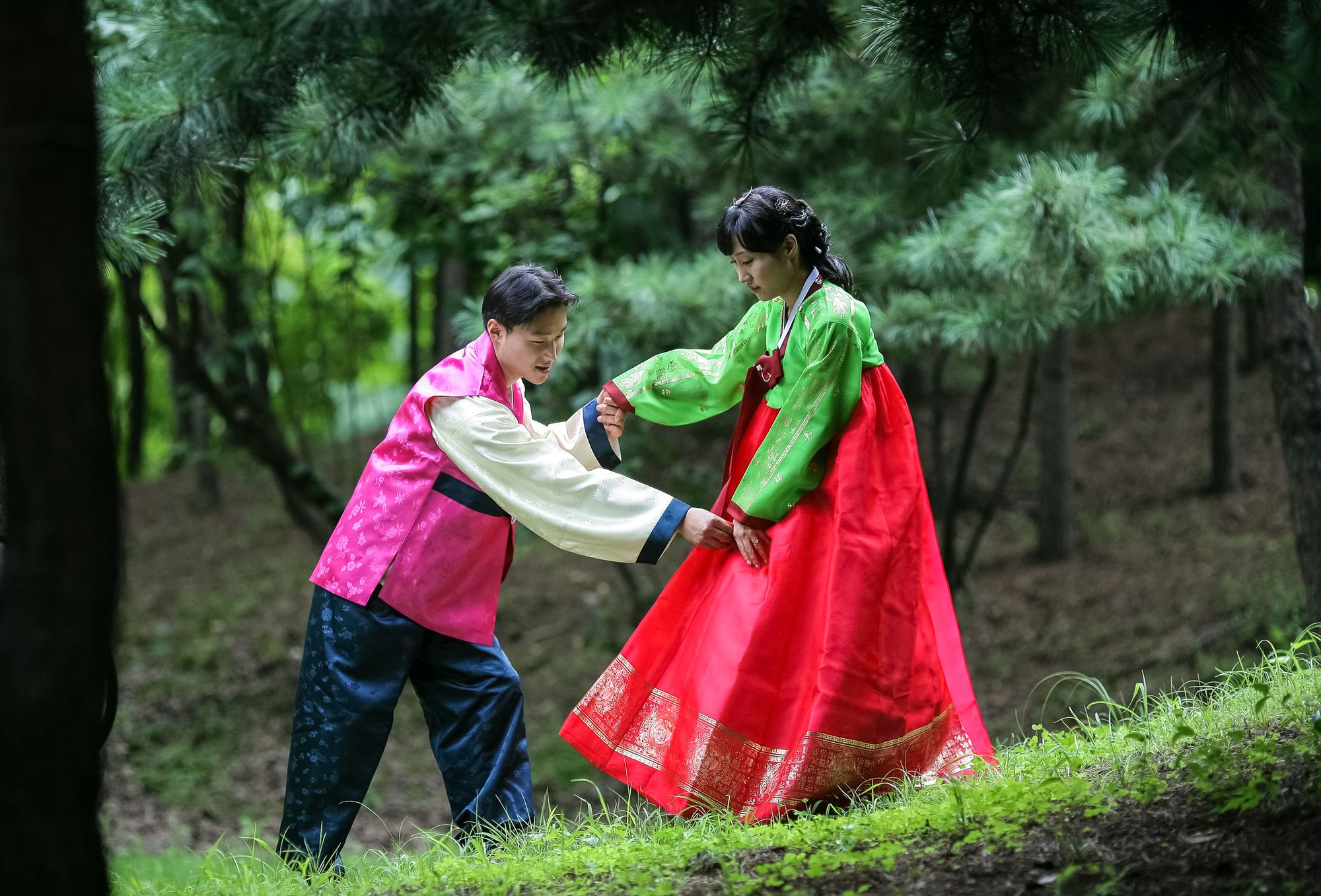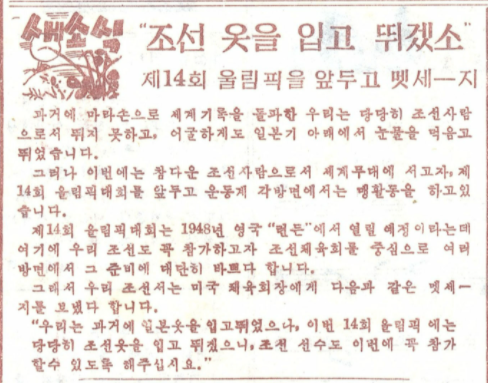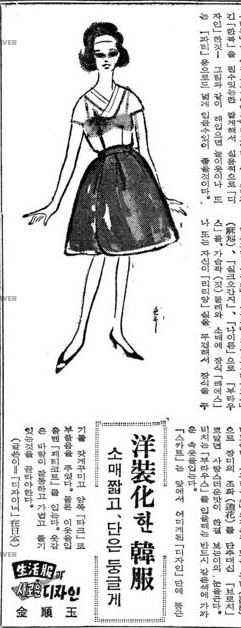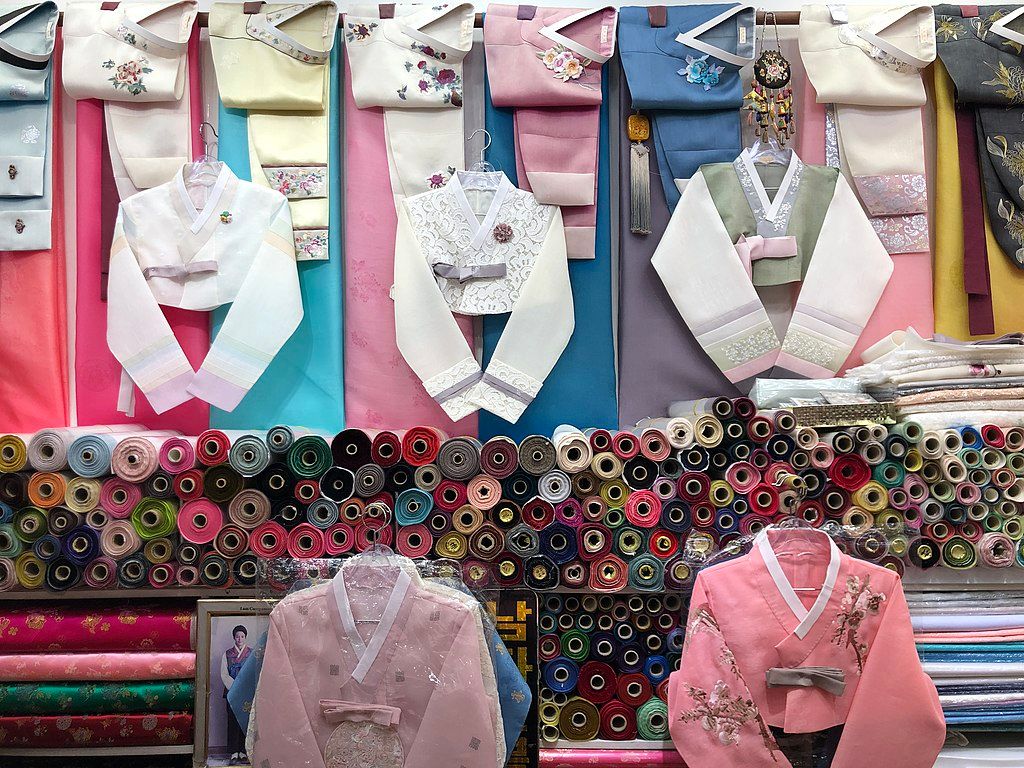
That Complicated Garment: Hanbok
Hanbok is often called "an integral part of Korean lives for centuries". But its status in contemporary Korea has not been exactly secure.
My mother has two sets of hanbok 한복, carefully stored in paper boxes. She has worn each of them exactly once—one for my brother's wedding more than twenty years ago and the other when a cousin of mine got married some ten years back.
While I was helping organize her closet last year, she saw them and pinched the area between her eyes in frustration. "I really should get rid of them."
"Why? They were expensive."
"Yes, but where would I wear it? And anyway they are not in the current style."
I can imagine an untold number of Korean households have this exact same conversation at some point. Many older women own at least one set of hanbok—Korea's national costume—and most of them will wear it on a handful occasions, if not just once.
Then it goes into the wardrobe, not to see the light of day.
It's a sign of hanbok's status in contemporary Korea. Praised as a symbol of Korean culture, it's become a costly luxury shunned in everyday life. The government puts up a brave front as it touts hanbok's beauty, but the industry complains of ongoing decline.
It might seem funny to have this discussion now considering that things have rarely looked so good for hanbok's prospect. The K-pop groups BTS and Blackpink donned versions of it for US comedian Jimmy Fallon's Tonight Show. At least before the Covid crisis started, foreigners in borrowed hanbok taking selfies at any number of palaces in central Seoul were a common sight. K-dramas, many of which focus on history, showcase Korean traditional garbs to a global audience.
But among Koreans, who make up the main customer base, dressing in hanbok is a dying custom. Poor sales of the garment make the news year after year. A bride and groom might wear it for the pre-wedding photoshoot, as do their mothers and some older female relatives at the nuptial. If the ceremony has a traditional component called pyebaek 폐백 (that's showing signs of going out of fashion), the newlywed will get into hanbok again for an hour, but that's it.
Not even major holidays like Chuseok 추석 (the Mid-Autumn Festival) and Seollal 설날 (the Lunar New Year) are excuses to bring out hanbok. I come across a question, asked online in 2008 by a woman who says she longs to wear a hanbok on Seollal but is afraid to because of how other people might think: "Not many people celebrate Seollal in hanbok these days, right? If I just did it, would it be over-the-top?"
She had reasons to be concerned. In 1994 less than 48 percent of Koreans wore hanbok even once in a year, and 55.4 percent of them for Seollal, according to Gallup Korea. In 2015 the same pollster determined that only 10 percent had worn it for the holiday the previous year.
So hard it has become to find enough Koreans in the traditional costume that one newspaper ran an amusing photo essay two years ago showing only non-Koreans in hanbok on Seollal. "We captured foreigners on visits to Gyeongbok Palace (in central Seoul) in hanbok, which we Koreans are ignoring."
I happen to like hanbok and used to don it regularly fifteen years ago when I apprenticed to a Korean traditional dance master. She insisted that all her students wear hanbok to practice, and rather than changing at the studio where I was the only male pupil, I preferred to put it on at home before heading over.
The disturbed stares from other Koreans on the subway were intense enough to put a hole in my hanbok. Once a whole group of elementary school students trailed me, yelling, "Dosa-nim! Dosa-nim!" (It means a venerable spiritual master, but could equally imply a new-age religious figure of a dubious reputation.)
Why such prejudice against something seen as inherently Korean?
Modern history of hanbok offers an answer. While various internet posts describe it as something along the line of "an integral part of Korean lives for centuries" or "the traditional attire of the Korean people", the name (한복 韓服) itself took off only at the turn of the last century to mean clothes Koreans wear, different from non-Korean fashion. It's a significant development: previously Koreans had no reason to tell other Koreans that what they wore was Korean; the need to distinguish something as uniquely Korean arose because non-Korean culture started to flood the country.
That historical circumstance made hanbok a vehicle for national identity throughout Japanese occupation (1910-45) and beyond. (Actually, the more common way of calling Korean clothes during that time wasn't hanbok but joseonot 조선옷—Joseon clothing—which is how North Korea refers to hanbok to this day.)

After the end of Japanese colonial rule, which had imposed restrictions on Korean language and culture, hanbok enjoyed a revival among citizens eager to express their new found independence. A children's newspaper in 1946 informed its readers that at the 1948 Summer Olympics in London "Koreans will proudly compete in Joseon clothing, even though in the past we competed in Japanese clothing."
A backlash could also be observed. The Seoul City Hall ordered its employees not to wear hanbok on the ground that the costume "undermines the authority of a government office". A newspaper editorial behooved people to choose an alternative, i.e. Western fashion, saying hanbok "reduces your dignity".
This dynamic has been on display ever since. Hanbok stands for Korean national identity, so when nationalism is on the rise, it comes back in style. But because it's so bound to the notion of tradition, it gets cast aside as old-fashioned or backward once the nationalist impulse subsides.
For hanbok has frequently been described in the modern era as being inconvenient, even by Koreans themselves. Its color—often white or of a pale tone before stronger hues became the norm— gave rise to calls that people should be taught to dye it dark so dirt doesn't show easily. Another disadvantage is the design: all that volume makes it hard to carry out daily chores, and the complicated knots don't always stay in place.
Talking about 'reforming' (gaeryang 개량) hanbok for modern life has been around for decades, but attempts inevitably invite incredulity if not outright anger. Any change devalues this important symbol of Korea, the traditionalists insist even today.

Not that hanbok has always stayed the same. Some—almost always older men with a nationalist, spiritual persuasion—walk around boldly in practical machine-washable cotton versions (hence the random children calling me "a venerable spiritual master" on seeing me in hanbok). And as my mother pointed out to me, the style in vogue changes constantly. Minute differences in the length of the jacket, width of the sleeves and even the color scheme can betray whether the hanbok you are wearing is of the moment or so two years ago. A high-end hanbok professional was frank in an interview last year with a business daily: "hanbok also has trends. After a year and a half it needs to be discarded."
Easier said than done when you pay anywhere from hundreds of thousands to millions of Korean won for it, depending on the maker and the fabric used.
It makes sense that many young Koreans in the 21st century say they shun hanbok for its discomfort, cost and difficult maintenance. (The phenomenon of renting a cheap one for nice photos against historical backdrops is another story.) The stiff white collar named dongjeong 동정, which keeps the sweat of the neck from staining the jacket, must be sewn into place and replaced periodically. Certain decorative elements like gold- or silver-foil prints can be tricky even for seasoned dry cleaners to deal with.

Yet the link between hanbok and Korea is so inextricable in contemporary discourse that even North Korea advertises its commitment to keeping the tradition alive, and that means of course that South Korea cannot fall behind in this effort, either.
Since March last year the last Wednesday of every month is a "hanbok-wearing day" at the culture ministry, and employees "voluntarily participate". Non-Korean women marrying Korean men lack no opportunity for wearing hanbok, so keen the government appears to integrate them into society by insisting that they learn a custom even an increasing share of the natives are shunning. Some schools adopt modified hanbok as their uniforms. Many young hanbok makers have earned the spotlight for trying to make it mainstream (and kudos to them).
It's an uphill battle, but there is another, more promising market on the horizon. "Some say it's easier to find dogs in hanbok than children in hanbok," reported the daily JoongAng on Tuesday. The pet hanbok industry is growing while demand for children's hanbok is falling continually.
And why not. Better that some are wearing hanbok than nobody at all.
Cover: Young Yong Kwon via flickr (CC BY-NC-SA 2.0)